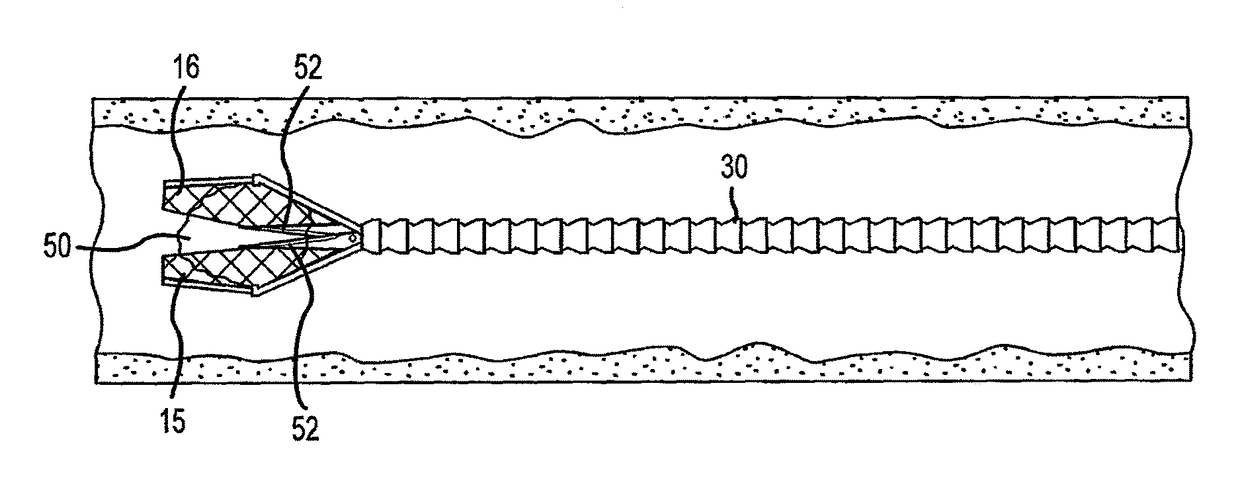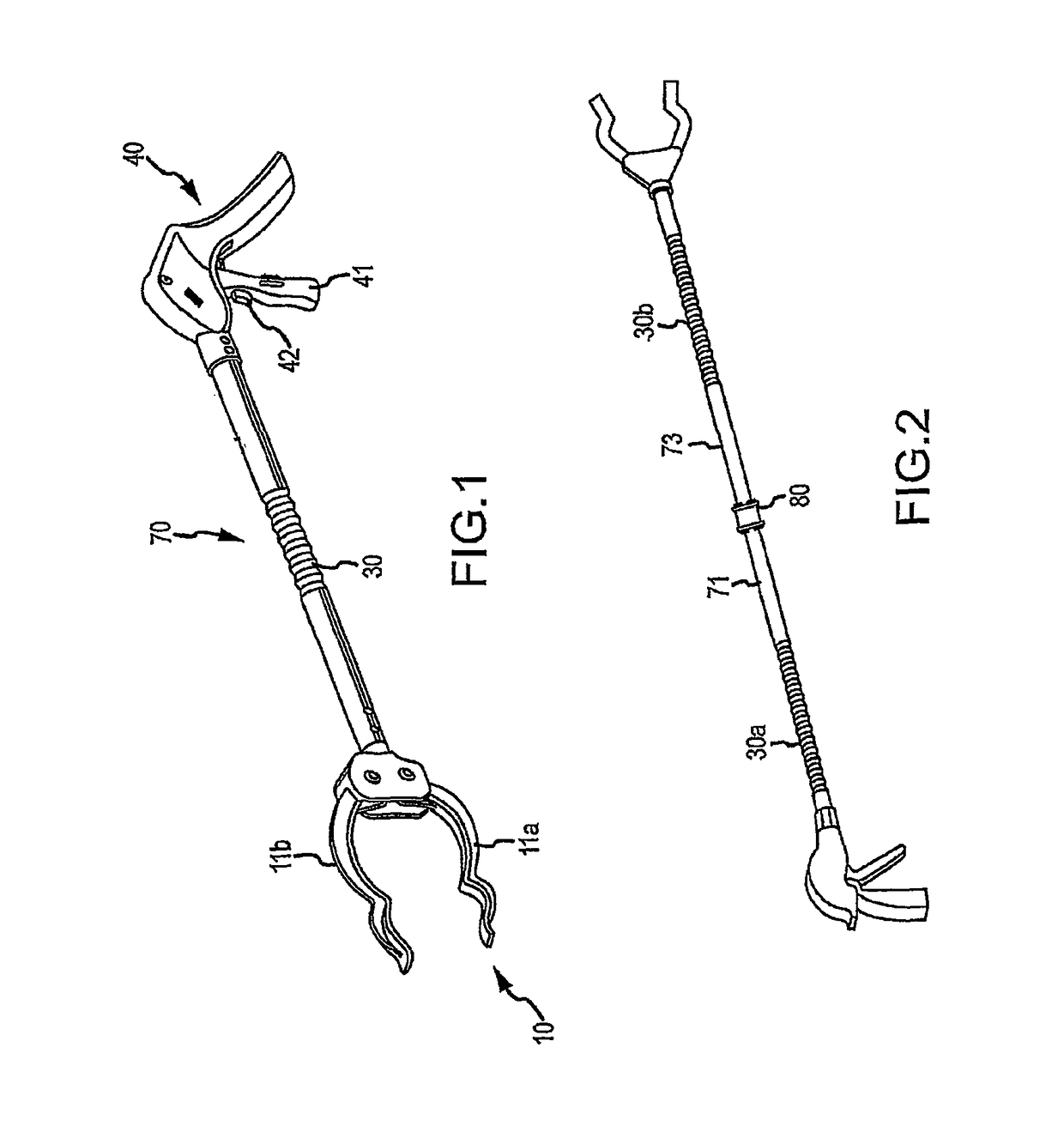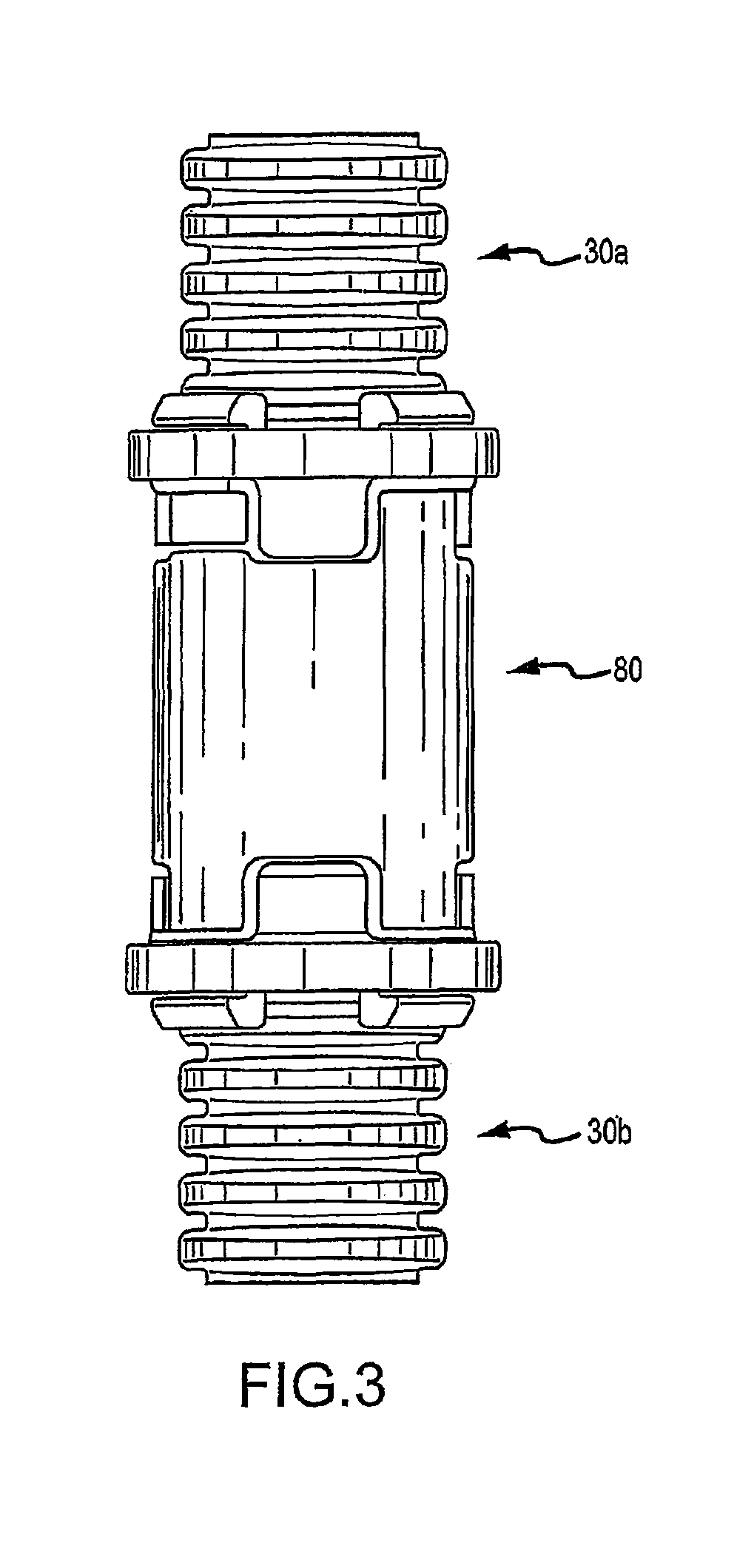Selectively bendable remote gripping tool
a remote access gripping and selective bend technology, applied in the field of selectively bendable remote access gripping tools, can solve the problems of affecting the quality of life of patients, and affecting the effect of patient comfort, so as to improve the quality of life, facilitate and facilitate use, and improve the effect of manipulating the function
- Summary
- Abstract
- Description
- Claims
- Application Information
AI Technical Summary
Benefits of technology
Problems solved by technology
Method used
Image
Examples
Embodiment Construction
[0108]It will be understood that the disclosed embodiments are merely exemplary of the invention that may be embodied in various and alternative forms. The figures are not necessarily to scale, some features may be exaggerated or minimized to show details of particular components. Therefore, specific structural and functional details disclosed herein are not to be interpreted as limiting, but merely as a representative basis for teaching one skilled in the art to variously employ the present invention. For the following description, the actuatable tool head assembly is described as a gripper having a jaw assembly 11. It is understood, however, that any type of actuatable tool head assembly may be used.
[0109]As disclosed in the figures, various embodiments of the present invention generally comprise a hand-held gripping device having a jaw portion (indicated generally at 10) comprising a pair of jaws 11a, 11b and a handle portion (indicated generally at 40) spaced apart by a selectiv...
PUM
 Login to View More
Login to View More Abstract
Description
Claims
Application Information
 Login to View More
Login to View More - R&D
- Intellectual Property
- Life Sciences
- Materials
- Tech Scout
- Unparalleled Data Quality
- Higher Quality Content
- 60% Fewer Hallucinations
Browse by: Latest US Patents, China's latest patents, Technical Efficacy Thesaurus, Application Domain, Technology Topic, Popular Technical Reports.
© 2025 PatSnap. All rights reserved.Legal|Privacy policy|Modern Slavery Act Transparency Statement|Sitemap|About US| Contact US: help@patsnap.com



